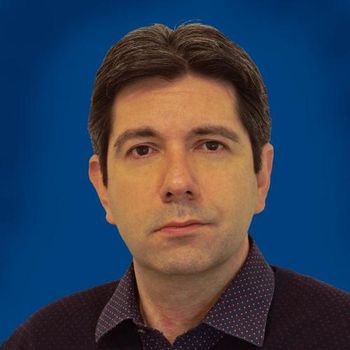
Mass Spectrometry and Infrared Spectroscopy to Improve Non-Contact Screening Methods at Airports
A research group from the Massachusetts Institute of Technology are exploring ways to build a new mechanical method that can detect concealed explosives at airports.
One of the biggest drawbacks of air travel is going through the airport security screening process. In the aftermath of September 11, 2001 the U.S. government (and other countries around the world) adopted new security protocols for boarding aircraft. In the United States, these new security measures came in the form of the creation of a new government agency, the Transportation Security Agency (TSA).
Going through the TSA screening process is not enjoyable for many travelers in addition to the typical annoyances of air travel, which normally include long, inefficient security lines. One of the main criticisms of the TSA is their screening process, which involves using X-rays to scan passengers’ bodies as well as pat downs.
As a result, many passengers welcome the possibility of non-invasive screening procedures becoming more commonplace, especially since current screening procedures are not working as effectively as they should be, for both passengers and cargo (1).
Recently, researchers from the Massachusetts Institute of Technology’s (MIT) Lincoln Laboratory Biological and Chemical Technologies Group are exploring building a new mechanical method that can detect concealed explosives (2). Sasha Wrobel and Ta-Hsuan Ong are leading the team of researchers to create and use a mass spectrometer to help train bomb-sniffing dogs (2).
The goal of the mass spectrometer is to measure explosive vapors to better understand how to create an operational explosive detection system (2). This project is sponsored by the Department of Homeland Security.
"The mass spectrometer samples the air around an item and then ionizes the vapors given off by the sample," Wrobel said, according to an article published on MIT News (2). "Depending on how these chemicals ionize, we can identify the chemical vapors by analyzing the mass, charge, and fragmentation patterns reported in mass spectra data."
As part of their research process, the team collected several thousand measurements, analyzing the data to get a better sense of how the vapor signatures of concealed explosives are influenced by different sample configurations (2). The data will also be used to evaluate data processing algorithms, so they can learn how to build the best instrument possible that can be used for screening procedures (2).
"The core technology is called longwave infrared imaging," Bill Barney said to MIT, who leads the infrared laser program (2). "It uses a laser that is scanned over a surface, and the scattered laser light has a spectrum to it. Some of the wavelengths of light in that spectrum are absorbed by explosives, which means the spectrum contains a fingerprint of the explosive that we can detect."
Infrared (IR) imaging is a technique that is often used in environmental monitoring and astronomy. It’s been used to study the composition of stars and to study the composition and movement of oceans (3). When used, IR imaging captures images of the IR spectra, which is outside the range of visible light, allowing researchers to see things that would not normally be visible (3). By capturing images based on an object’s temperature, IR imaging can detect traces of explosives on the spectrum that would not normally be seen.
However, the researchers acknowledged that the IR method does have several complications that need to be addressed. Because some materials absorb light similarly to explosives, Barney and his team are exploring how machine learning can help rectify this problem (2).
"Last year, we were very successful in detecting low levels of explosives on our test samples, which is promising," Barney says (2). "But there's a lot of engineering and science left to do before you would be able to get this kind of system working in an airport."
References
(1) Bradner, E.; Marsh, R. Acting TSA Director Reassigned After Screeners Failed Tests to Detect Explosives, Weapons. CNN.com. Available at:
(2) McGovern, A. Improving the Speed and Safety of Airport Security Screening. MIT News. Available at:
(3) Photon, etc. What is Infrared Imaging? Available at:
Newsletter
Get essential updates on the latest spectroscopy technologies, regulatory standards, and best practices—subscribe today to Spectroscopy.





